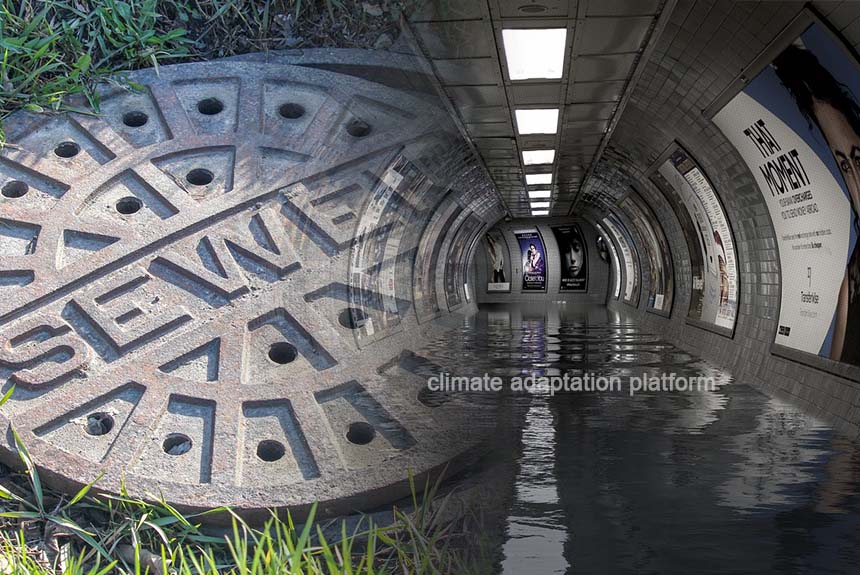Rising sea levels are causing coastal groundwater to lift closer to the ground. As they ascend, it becomes saltier and more corrosive, posing a risk to buried and partially buried infrastructure.
When buried and semi-buried infrastructure, such as sewer lines, roadways, and building foundations, comes into contact with these salty waters, it can corrode and fail.
A 2023 study, “Hidden Threat: The Influence of Sea-Level Rise on Coastal Groundwater and the Convergence of Impacts on Municipal Infrastructure,” by earth scientists at the University of Hawai’i (UH) at Mānoa, explores the repercussions of rising sea levels on coastal groundwater and how this phenomenon exacerbates the deterioration of critical municipal infrastructure.
The authors compiled research from experts worldwide to demonstrate that the interaction between elevated, saltier groundwater and buried infrastructure like sewer lines, roadways, and building foundations heightens corrosion and failure rates.
Researchers employed worldwide elevation and geospatial data that indicate the extent of urban development. They identified 1,546 low-lying coastal cities and towns globally, where around 1.42 billion people live, that are likely experiencing these impacts.
“The IPCC 6th Assessment Report tells us that sea-level rise is an unstoppable and irreversible reality for centuries to millennia,” said Chip Fletcher, study co-author, interim dean of SOEST, and director of the UH Mānoa Climate Resilience Collaborative (CRC). “Now is the time to prepare for the challenges posed by this problem by redesigning our communities for greater resilience and social equity” (Gabowski, 2024).
Out of sight, out of mind
Shellie Habel, lead author and coastal geologist in the UH Mānoa School of Ocean and Earth Science and Technology (SOEST), pointed out that the damage from sea level rise-influenced coastal groundwater is often concealed and not immediately perceptible, and hence it is usually overlooked in infrastructure management and planning efforts.
She added, “While it has been recognized that shallowing groundwater will eventually result in chronic flooding as it surfaces, what is less known is that it can start causing problems decades beforehand as groundwater interacts with buried infrastructure.” This knowledge gap often results in coastal groundwater changes being fully overlooked in infrastructure planning, Habel says (Gabowski, 2024).
As our planet continues to warm, the acceleration of the rise of sea level becomes an imminent threat. The research on sea level rise risks raises awareness of its hidden threats and underscores the need for immediate action.
This study is particularly crucial for coastal cities like Hawaii, where the concentration of communities and infrastructure is high, and climate adaptation strategies are urgently needed.
Source:
Grabowski, M. (2024, April 15). Rising seas to eat away at underground infrastructure in Hawaiʻi, globally. University of Hawaii News. Retrieved from https://www.hawaii.edu/news/2024/04/15/underground-infrastructure-corroding/
Habel, S., Fletcher, C., Barbee, M., & Fornace, K. (2024). Hidden Threat: The Influence of Sea-Level Rise on Coastal Groundwater and the Convergence of Impacts on Municipal Infrastructure. Annual Review of Marine Science. Retrieved from https://www.annualreviews.org/content/journals/10.1146/annurev-marine-020923-120737



Leave a Reply